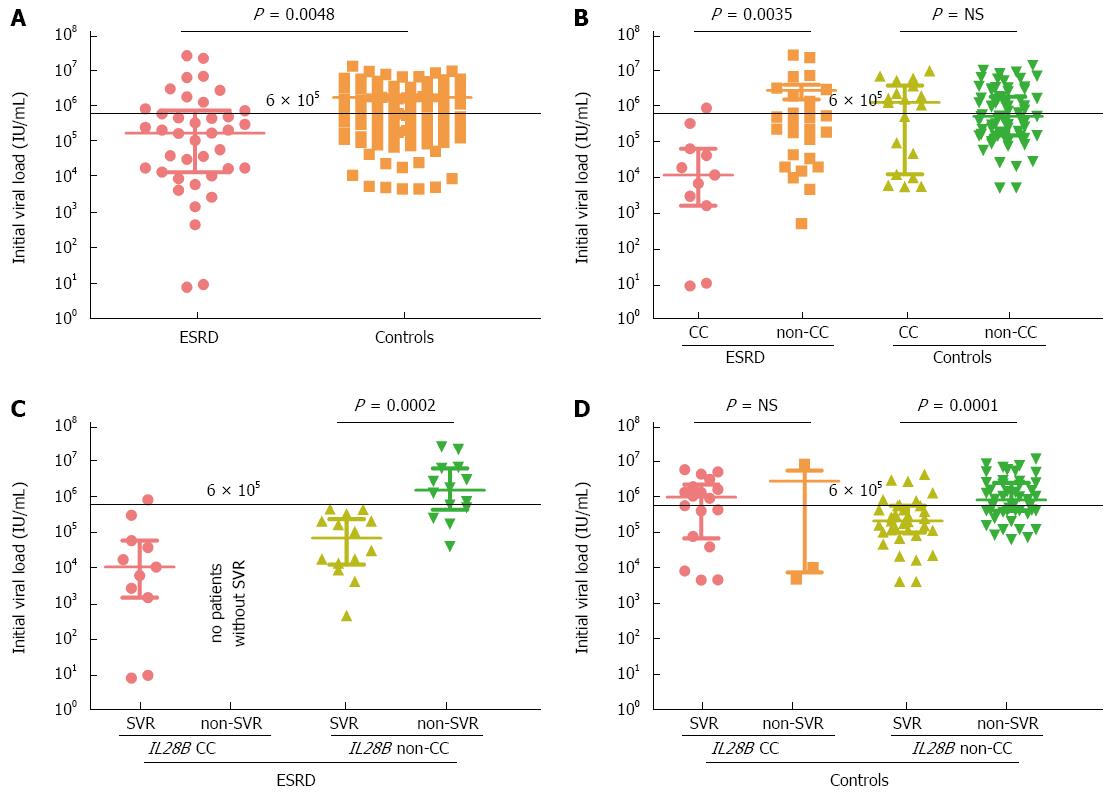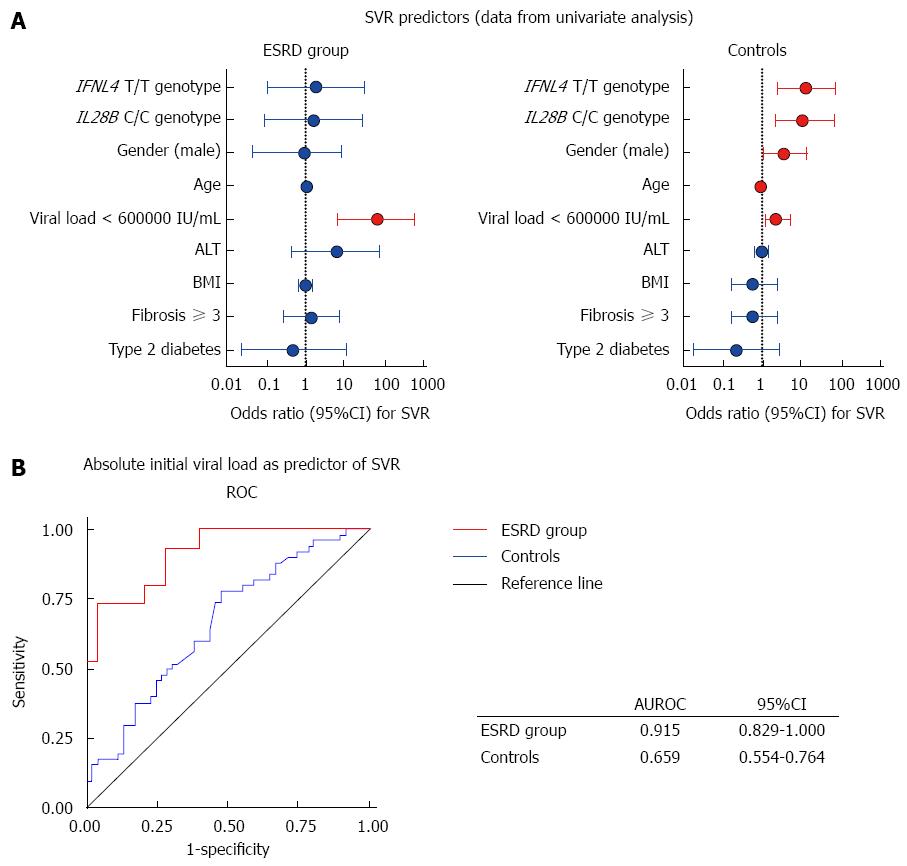Copyright
©The Author(s) 2015.
World J Gastroenterol. May 14, 2015; 21(18): 5496-5504
Published online May 14, 2015. doi: 10.3748/wjg.v21.i18.5496
Published online May 14, 2015. doi: 10.3748/wjg.v21.i18.5496
Figure 1 Initial viral load in end stage renal disease patients and controls grouped according to their IL28B genotype and sustained virological response.
The data from 39 patients with end-stage renal disease and 109 controls are shown as individual dots. Horizontal bars indicate median (thick line) and interquartile range (thin lines). A Mann-Whitney test was used to compare the means. End stage renal disease (ESRD) patients had significantly lower initial viral load (IVL) than controls (A). IL28B CC carriers had significantly lower IVL in the ESRD group, but not in the control group (B). Low IVL predicted better a sustained virological response (SVR) in the ESRD group (C) than in controls (D).
Figure 2 Prediction of sustained virological response based on the IL28B genotype, viral load and demographic data.
Variables presented in Forest plots and sorted by their relative contribution to sustained virological response (SVR) in end stage renal disease (ESRD) and controls (A). Predicted probabilities calculated in regression analysis for initial viral load (IVL) were used to construct receiver operating characteristics curves (ROC) for ESRD patients and controls (B).
- Citation: Sperl J, Frankova S, Senkerikova R, Neroldova M, Hejda V, Volfova M, Merta D, Viklicky O, Spicak J, Jirsa M. Relevance of low viral load in haemodialysed patients with chronic hepatitis C virus infection. World J Gastroenterol 2015; 21(18): 5496-5504
- URL: https://www.wjgnet.com/1007-9327/full/v21/i18/5496.htm
- DOI: https://dx.doi.org/10.3748/wjg.v21.i18.5496










